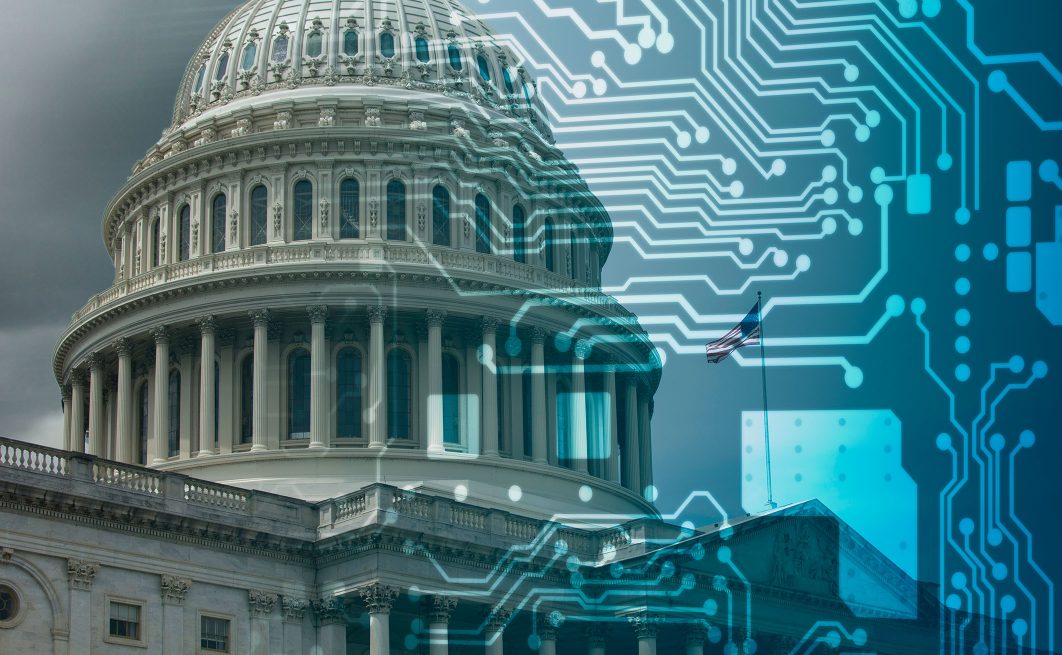How Can Federal Managers Start Focusing On AI Tools And Training?
Artificial intelligence is no longer just a buzzword; it’s permeating workplaces and several other aspects of our lives at a rapid pace. It’s too soon to determine whether its impact on the transformation of workplaces and workforces would be as significant as the internet was, but we can no longer ignore it. That leaves federal managers in a tough spot. They may want to keep their teams and their staff members up-to-date on the latest tools and technologies, but at the same time, they may be hesitant about using these tools without a proper guidance framework and regulations in place, owing to the sensitive nature of government’s work and the data they have access to.
Factors Affecting Adoption of AI Tools in Federal Workplaces
While most federal managers recognize the need for it, relatively few may push for an active adoption and frequent use of AI tools in federal workplaces. The reasons are:
Lack of Guidelines
The first thing stopping most federal managers from pushing for incorporating AI tools in the workflow of their teams is the lack of clear guidelines. Even though several AI tools have been around for years now, there are no clear guidelines in most federal departments/agencies about how to use AI tools and which AI tools are allowed and which ones are forbidden. While most AI tools place great emphasis on data security, they also use data to learn and improve. This may conflict with the data security policies of a federal department/agency, and since there are no clear guidelines for it, federal managers may not take the risk.
Lack of Understanding of The Tools
There is also a lack of understanding of the AI tools, especially the ones available online for the general public. Federal managers may not understand the difference between AI tools that leverage algorithms sitting on cloud and cloud computing resources and the danger they pose to AI tools running natively on a device, which may offer relative safety. Similarly, there is also a lack of clarity about the accuracy of the information obtained and processed from these tools, and manually rechecking or retracing may make the whole process lengthier than the non-AI route.
No Urgent Need
Another reason AI tools and training are lacking traction in federal agencies and departments is that many federal managers don’t see any urgent need to use them. While many AI tools can significantly enhance productivity, they may not necessarily solve new and unique problems that are impossible to solve using conventional/non-AI tools. Even if this perception is wrong, the attitude “don’t fix what isn’t broken” may hinder AI adoption in federal workplaces.
Inflexible Operating Conditions
Many federal managers may not be able to find a place for AI tools in their teams’ workflow. It may be because the existing workflow and tools used are optimized for perfection, and adding another element (an AI tool) will simply add confusion and uncertainty to the process.
Lack of Available Training Options
While the lack of technical acumen in the federal workforce is a critical factor slowing down AI adoption, it’s being augmented by the lack of available training options. Training programs on AI use, AI tools, and federal AI policy can grease the wheel for this adoption, especially if they are designed especially for federal employees and keep their needs/experiences in mind.
How Federal Managers Should Start Focusing On AI Tools and Training
There are several steps federal managers can take to introduce and adopt AI tools in their workplaces. This includes:
- Understanding the ever-evolving nature of AI tools and AI in general. It’s not uncommon for AI tools to improve or become obsolete in a matter of weeks. So, federal managers should prepare training requests and design policies that are more general and timeless in nature because if they are too specific, they would constantly need to be changed and replaced.
- Start learning about AI tools that might be most relevant to their team and the individual tasks the team members perform. Not all AI tools may be useful for the team members and may do more harm (by distracting them) than good for their team members. So, the focus should be on identifying the right tools for the job.
- Look into the data and cybersecurity vulnerabilities of the shortlisted tools. When federal managers know which AI tools can be useful to their team, they should start looking into the security of the tools to ensure they don’t become security liabilities.
- Understand the limitations of AI tools. It’s important for federal managers to learn that AI tools may not be the most reliable and useful resource in all scenarios, especially in their current nascent stage. This will prevent them from developing high expectations and set reasonable KPIs and expectations in accordance with AI tools.
- Federal managers should also take the ethical consideration of using certain AI tools into account. Some AI tools have certain ethical lapses inherent in their training and programming (like bias), and using these tools without taking steps to offset those ethical challenges can lead to several negative consequences.
- Identify the baseline tech expertise of their team members. Federal managers working with a relatively young team may have a more conducive environment for AI adoption compared to managers working with older, less tech-savvy teams.
- Perceive AI tools and training from a change management perspective. AI tools have the potential to significantly change the roles and responsibilities of federal employees in certain positions, and they may even make certain jobs redundant, which is a major ethical concern. Federal managers should take these factors into account before pushing for the use of AI tools in the workplace.
- Federal managers should start developing internal practices and guidelines for the use of AI tools. These policies can be far more relevant and directed than the policies developed and enforced by the federal government across all departments and agencies because they would be built around tools and technologies that a particular federal workforce will actually use.
The overarching goal here is understanding and learning. If they understand the AI tools and technologies well enough, they may serve as the “seeds” for their teams when it comes to AI technologies.
When Federal Managers Should and Shouldn’t Push For AI Adoption
There are several scenarios where federal managers should push for more rapid AI adoption in their workforce or within their teams. If they understand the tools and know that they can make a significant and tangible difference in the productivity and efficiency of their team and in the pursuit of their goals with the right AI tools, they should push for their adoption and facilitate training. There might be an AI tool available that allows them to solve a problem or a set of problems they can’t solve with their existing tools and expertise. In that scenario, pushing for the use of that tool and its training is a valid thing to do. Federal managers should also seek the use of AI tools when it allows them to attract and retain top talent, especially in tech positions.
However, there are times when federal managers should refrain from or at least delay using AI tools and requesting relevant training programs. If they don’t understand the full implications of using AI tools in their workforce or only have access to AI tools that may have certain vulnerabilities or ethical issues, making them unfit for their work, they should discourage their use. If a framework is under development to govern the safe use of AI tools in federal workforces, federal managers may allow them to be used in a learning capacity but not in actual work, especially not in conditions where it has access to government data. Using AI tools in any scenario where its impact hasn’t been fully tested yet can also be disastrous for federal managers, and they should avoid it. Federal managers should also avoid AI tools using black-box algorithms, i.e., which may offer answers and conclusions, but you don’t know how they came up with those answers and solutions. Also, simply from an efficiency perspective, federal managers should avoid the use of AI tools or investment in AI tools if their tangible benefits or ROI is not yet clear.
Final Words
AI tools becoming part of federal workforces is inevitable, but they are still in their early stages. There is a significant lack of clarity when it comes to the benefits of AI tools in various use case scenarios, a lack of governing framework, and few training options. All of this would change with time, but federal managers who wish to take the early bird advantage might start looking into the use of AI tools before frameworks and regulations are in place. It’s not necessarily a bad strategy, but these federal managers should learn to move with caution when it comes to AI tools and make careful choices.


